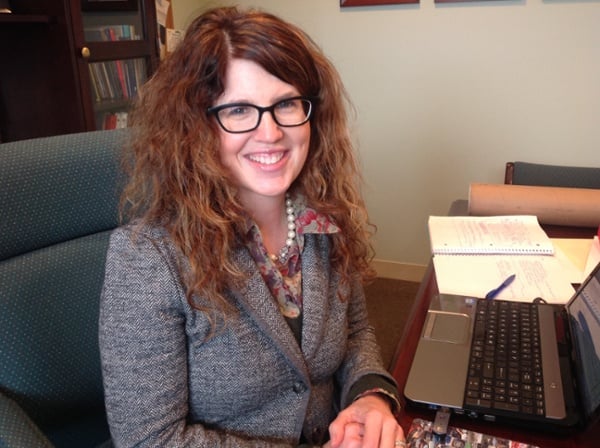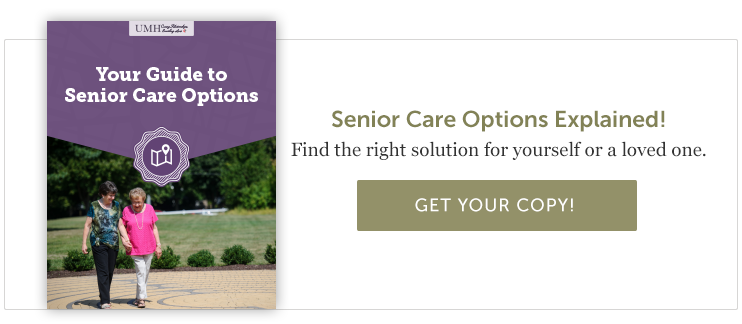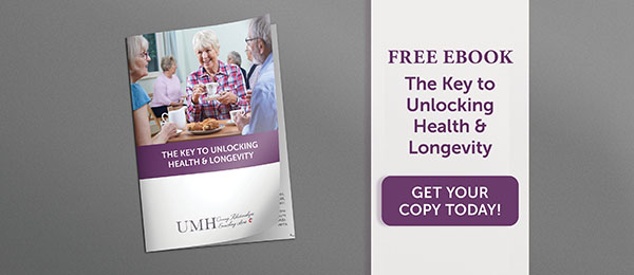8 Common Fears Quelled by the Benefits of a Senior Living Community
assisted living | Senior Living Communities CT | senior health | senior health tips | Independent Senior Living | healthy living | independent living in ct | aging well
The senior stage of life can be an absolutely beautiful one, and it can also come with its fair share of worries. So many older adults cherish their family home and desire to age in place there, but changes in physical, mental, emotional, and logistical realities may eventually make this option a challenging and worrisome one — for both the seniors living there and their caregivers or loved ones. At some point, it may no longer be the best choice for a senior’s ability to age well and thrive in their golden years and beyond.
Shifting the focus to an “aging in community” approach is often a more beneficial path, and this article highlights many of the reasons why. Senior living communities give seniors the opportunity to embrace a healthier, more vibrant and less worrisome quality of life. Following are eight of the most relevant fears experienced by older adults, as well as the senior living community benefits that can actually ease these fears and support seniors in living their best lives.
1. Is the environment safe and secure?
Plenty of older adults begin to experience anxiety about living alone. One aspect of this stress might be a fear of falling, or they may worry about what to do and who will help in an emergency. They may experience a particular level of uncertainty during the early daytime or late evening hours. These can be very real and overwhelming concerns for seniors as they continue to age at home.
In a senior living community, safety and security are top priorities. Residents benefit from a secured home environment with staff present on-site 24 hours a day, including regular and ongoing safety checks. The living spaces are specifically designed to support older adults’ mobility challenges and prevent falls, and immediate assistance is available when emergencies arise. All of this amounts to unparalleled peace of mind for seniors and their loved ones.
2. Are health and wellness being prioritized?
Living alone in one’s senior years often equates to eating alone most of the time. Plus, preparing meals and making healthy options can become a struggle. This fact, combined with limited exercise, activity, and access to fitness programs, means that declines in overall health and wellness can rapidly escalate.
Mealtimes at senior living communities bring residents and friends together around the table for a more connected experience that supports mental well-being. These communities also ensure balanced meals that meet nutritional and dietary needs, all while providing variety and choice. Daily fitness opportunities for increased mobility and strength help to encourage an active lifestyle and prevent falls. All of these factors contribute to greater opportunities for maintaining health and wellness in a far less stressful way.
3. Are fulfilling relationships being sustained?
There’s plenty of anxiety surrounding the reality of living alone, and one prominent reason is a shrinking social network. When seniors become increasingly disconnected from the people around them, depression and a growing feeling of social isolation are common outcomes. Because there can also be great demands on family caregivers to fill multiple roles, even relationships with loved ones may become strained.
In an environment where relationships are front and center, however, there are boundless opportunities for companionship and camaraderie. Visits with friends and neighbors become part of daily routines at a senior living community, and a sense of deep disconnect is replaced with the knowledge that each person is welcome, belongs, and truly matters.
4. Is home maintenance becoming too much to manage?
There’s a real burden of keeping up with household chores when physical limitations impact one’s ability. The responsibility of home maintenance and seasonal tasks, such as raking, shoveling, lawn care, and spring cleaning, can quickly turn to overwhelm, and caregivers may become overtasked with assisting in this upkeep.
Senior living communities alleviate home maintenance for older adults by providing laundry and linen service, regular housekeeping, and maintenance by attentive, caring staff. This kind of maintenance-free living eliminates burdensome responsibilities for loved ones and family caregivers, allowing more time for visiting and making memories.
5. Is transportation available when needed?
Getting around becomes a trickier effort as people age and can no longer drive safely and confidently on their own. Seniors often become dependent on others for appointments, shopping, errands, and other outings, and family caregivers have limited availability.
In a senior living community, residents can count on scheduled transportation to medical appointments and lots of other places to conduct their daily activities. Door-to-door service, with escorts, is typically available when needed, making the transportation challenge one less reason for worry.
6. Is there a quality connection to the community?
A senior’s aging challenges can lead to limited opportunities for community involvement, volunteering, and recreational activities—even ones they have enjoyed and cherished in the past. As these opportunities wane, feelings of disconnectedness are sure to emerge, and it can result in a diminished sense of purpose and fulfillment for seniors.
Quality senior living communities are known for their full calendar of social, educational, cultural, and spiritual events and activities. This abundance of opportunities for community involvement and volunteering provides a sense of meaning and purpose that enable seniors to thrive.
7. Is there optimal access to healthcare services?
Seniors who live alone at home often experience difficulty managing medications and changing care needs as these issues become increasingly complex. Caregivers may even have their own frustrations with navigating health and home care options, and there are bound to be additional burdens on family caregivers to coordinate care.
In senior living communities where assisted living and wellness coordination services are present, these issues are no longer all-consuming concerns. Companion and customized private care services are available when needed, and residents, their families, and the nursing staff work together to meet changing care needs.
8. What is the reality of maintaining personal independence?
Limitations in a senior’s home environment can present major mobility challenges, and aging loved ones may begin to rely heavily on help from others for routine tasks—leading to fear and reluctance around doing things for oneself and/or intense feelings of “being a burden” to caregivers and loved ones.
The senior living community environment accommodates different levels of mobility, thereby fostering freedom and choice for a healthier lifestyle. Caring staff members provide support while encouraging residents to live as independently as possible. In actuality, this increased sense of confidence replaces fear and leads to greater independence.
To find out how United Methodist Homes provides a wealth of offerings and opportunities to support the health and well-being of our residents, contact us today or schedule a complimentary visit now. For additional tips on senior health and lifestyle issues, check out our blog.
About Elizabeth Bemis
In 1998, I drove past an assisted living community construction site, learned that it was part of United Methodist Homes and realized the next stop on my professional journey was to work for a mission driven organization. Soon after, I joined the team as Executive Director of our Middlewoods of Farmington community and later served as Regional Manager for the Middlewoods properties before accepting my current role as Vice President of Marketing, Promotions, and Assisted Living Operations. I enjoy spending time with my family, cooking, reading, walking, and love working alongside our staff, residents, and families to build strong communities that reflect the mission, vision, and values of United Methodist Homes.

Our Blog is a 2016 Platinum Generations Award Winner! The Generations Award is an annual international competition for excellence in senior marketing recognizing professionals who have communicated to the 50+ Mature Markets.





